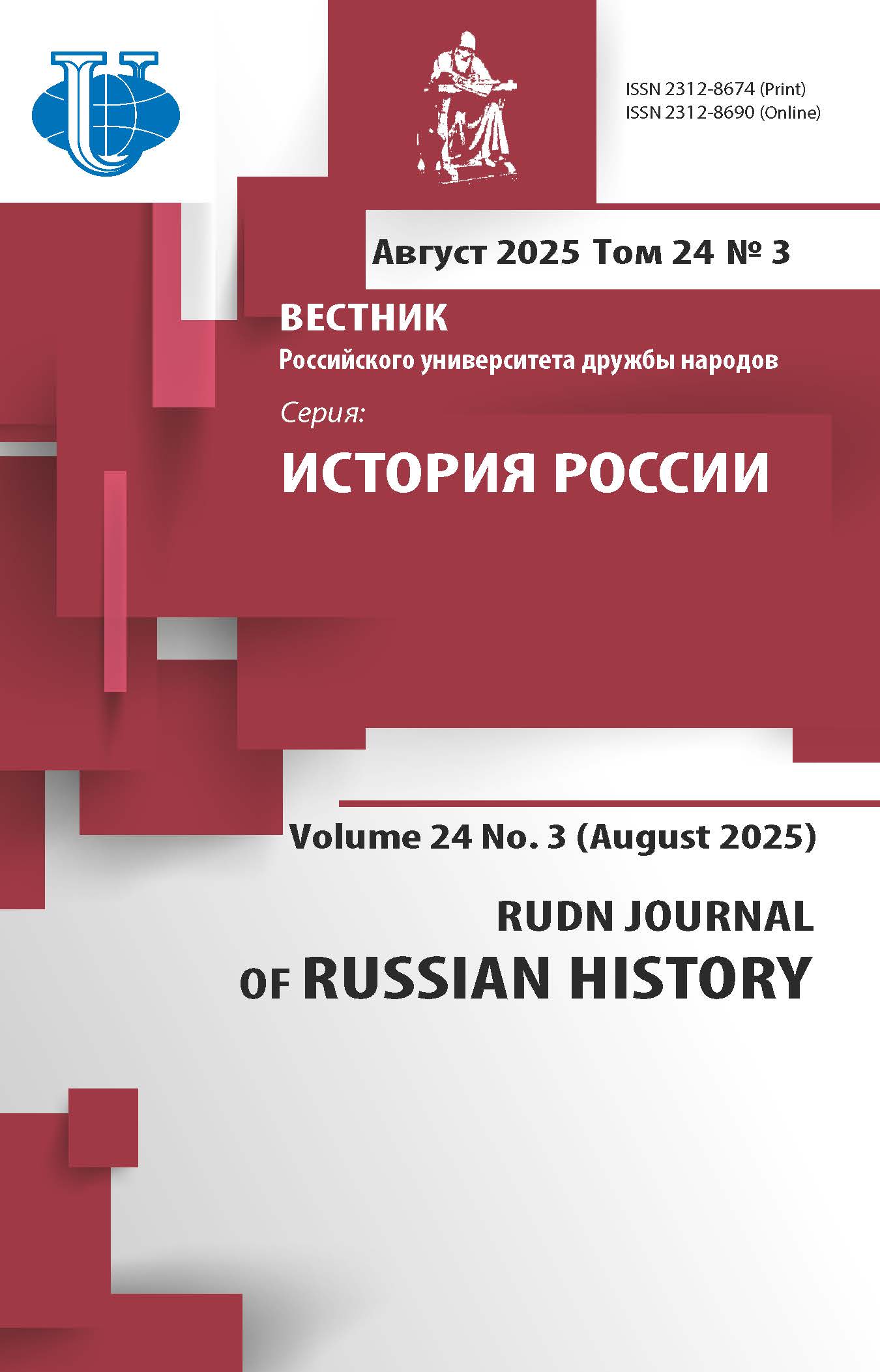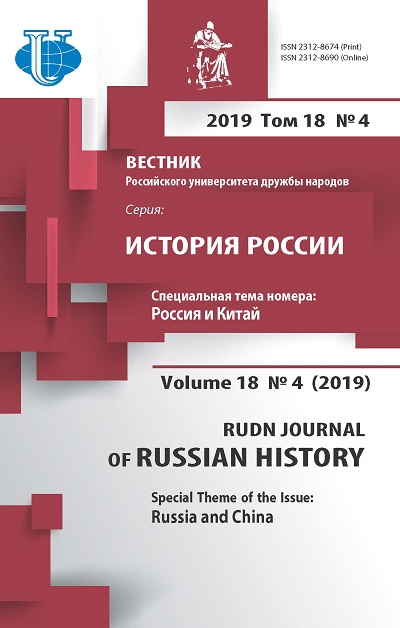Деятельность российских общественных организаций в Китае в 1917 г. (на примере русской колонии в Маньчжурии и Синьцзяне)
- Авторы: Наземцева Е.Н.1
-
Учреждения:
- Военная академия Генерального штаба Вооруженных Сил Российской Федерации
- Выпуск: Том 18, № 4 (2019): РОССИЯ И КИТАЙ
- Страницы: 758-778
- Раздел: РОССИЯ И КИТАЙ
- URL: https://journals.rudn.ru/russian-history/article/view/22306
- DOI: https://doi.org/10.22363/2312-8674-2019-18-4-758-778
- ID: 22306
Цитировать
Полный текст
Аннотация
Статья посвящена деятельности российских общественных организаций в Китае в 1917 г. Февральская революция 1917 г. и последующие за ней события в России вызвали глубокий революционный кризис. Задача статьи заключается в исследовании революционных процессов в российской диаспоре в Китае в 1917 г. на материалах Маньчжурии и Синьцзяна. Публикация основана на не вводившихся ранее в научный оборот архивных источниках. В изучаемый период в Китайской республике сформировалась многочисленная российская диаспора, состав которой зависел от специфики региона. Сведения о революционных событиях в России и прибывавшие в Китай агитаторы заметно активизировали политическую жизнь в колониях. Наиболее ярко это проявилось в Маньчжурии, где ключевое влияние на жизнь диаспоры оказывала Китайско-Восточная железная дорога (КВЖД), здесь с марта 1917 г. уже начали создаваться различные организации - исполнительные комитеты, Советы рабочих и солдатских депутатов, партийные ячейки РСДРП(б). В течение всего года в Харбине проводились митинги, демонстрации, собрания в поддержку революции и против русской администрации дороги, которая отнеслась к событиям в России с осторожностью и недоверием. Дестабилизация политической обстановки вызывала недовольство китайских властей и международного сообщества из-за нарушения работы КВЖД и привела к вводу китайских войск в Харбин. Деятельность общественных организаций в Синьцзяне в 1917 г. была менее активной, однако также вызывала недовольство китайского руководства из-за опасения вспышек серьезных этнических конфликтов в многонациональном Восточном Туркестане, еще не оправившемся от восстания 1916 г. В Шанхае, Пекине и Тяньцзине подобные организации отсутствовали. Тем не менее одним из главных последствий данных событий стало ослабление российских позиций в Китае, а также на Дальнем Востоке и в Центральной Азии в целом.
Об авторах
Елена Николаевна Наземцева
Военная академия Генерального штаба Вооруженных Сил Российской Федерации
Автор, ответственный за переписку.
Email: elenanazz@mail.ru
доктор исторических наук, старший научный сотрудник Научно-исследовательского института (военной истории) Военной академии Генерального штаба ВС РФ.
119330, Россия, Москва, Университетский пр.,14Список литературы
- Аблажей Н.Н. С востока на восток: Российская эмиграция в Китае. Новосибирск: Изд-во СО РАН, 2007. 300 с.
- Аблова Н.Е. История КВЖД и российской эмиграции в Китае (первая половина ХХ в.). Минск: Изд-во БГУ, 1999. 316 с.
- Аурилене Е.Е. Российская диаспора в Китае. 1920-1950-е гг. Хабаровск: Частная коллекция, 2008. 268 с.
- Ван Чжичен. История Русской колонии в Шанхае. М.: Русский путь, 2008. 573 с.
- Говердовская Л.Ф. Общественно-политическая и культурная деятельность русской эмиграции в Китае в 1917-1931 гг. М.: Изд-во МАДИ, 2000. 188 с.
- Кротова М.В. СССР и российская эмиграция в Маньчжурии (1920-1930-е гг.). СПб.: Астерион, 2014. 377 с.
- Ли Иннань. Cтолетие Октябрьской революции в китайской политической, общественной и научной мысли // Российская история. 2018. № 6. С. 43-56.
- Наземцева Е.Н. Деятельность русских общественных организаций по урегулированию прав русских эмигрантов в Китае (1917 - начало 1930-х гг.) // Российская история. 2015. № 4. С. 51-62.
- Олейников И.В. Антикризисная деятельность администрации КВЖД в революционное время (1917-1920 гг.). Новосибирск: Изд-во НГПУ, 2012. 105 с.
- Ставров И.В. Некоторые вопросы адаптации россиян в Маньчжурии в первой половине ХХ в. // Ойкумена. 2010. № 4. С. 58-64.
- Ходяков М.В. Желтороссия конца XIX - начала XX века в геополитических планах русской военной элиты // Новейшая история России. 2018. Т. 8. № 4. С. 880-897.
- Янченко Д.Г., Старовойтова Е.О. Перспективы экономического развития Китайско-Восточной железной дороги после Русско-японской войны: региональный аспект и петербургская политика // Новейшая история России. 2018. Т. 8. № 3. С. 583-597.
Дополнительные файлы















